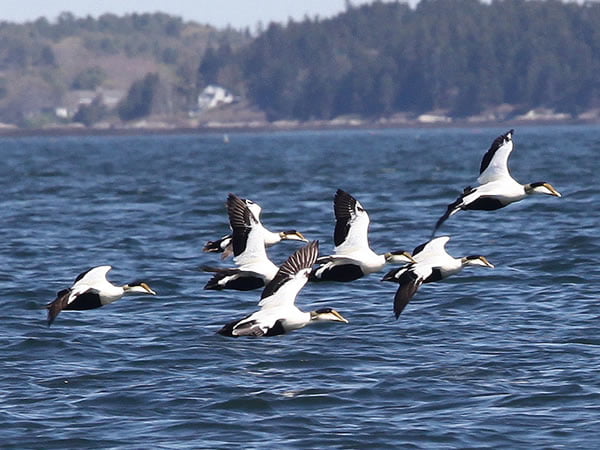SDJV71 Interim Report FY06
SDJV71 Interim Report FY07
SDJV71 Final Report FY08
Ecological and behavioural monitoring of American Common Eiders during the annual cycle

Project Number: 71
Year Funded: 2008
Lead Institution(s): University of Quebec
Project Lead: Magella Guillemette
Collaborator(s): SDJV, CWS, UQAR
Location: Quebec
Focal Species: Common Eider (Somateria mollissima)
Project Description: In this project, we monitored the behavior and energy expenditure of individual eiders during a full annual cycle. Our main goal was to link together the various biological phases (post-hatching, molting, pre-laying, etc.) of the annual cycle by understanding the relationships between habitat use, energy expenditure, food demand and migratory movements. Our objectives were 1) to quantify the timing and duration of annual phases, 2) to quantify habitat use (depth), energy expenditure, time spent diving and body condition of post-reproductive females, 3) to use depth, daily diving and bottom time to estimate feeding efficiency and foraging effort throughout the annual cycle, and 4) to estimate the duration of the pre-laying period based on the timing of spring migration and relate these (individual) estimates to energy expenditure, foraging behavior and laying date.
Project Reports:
